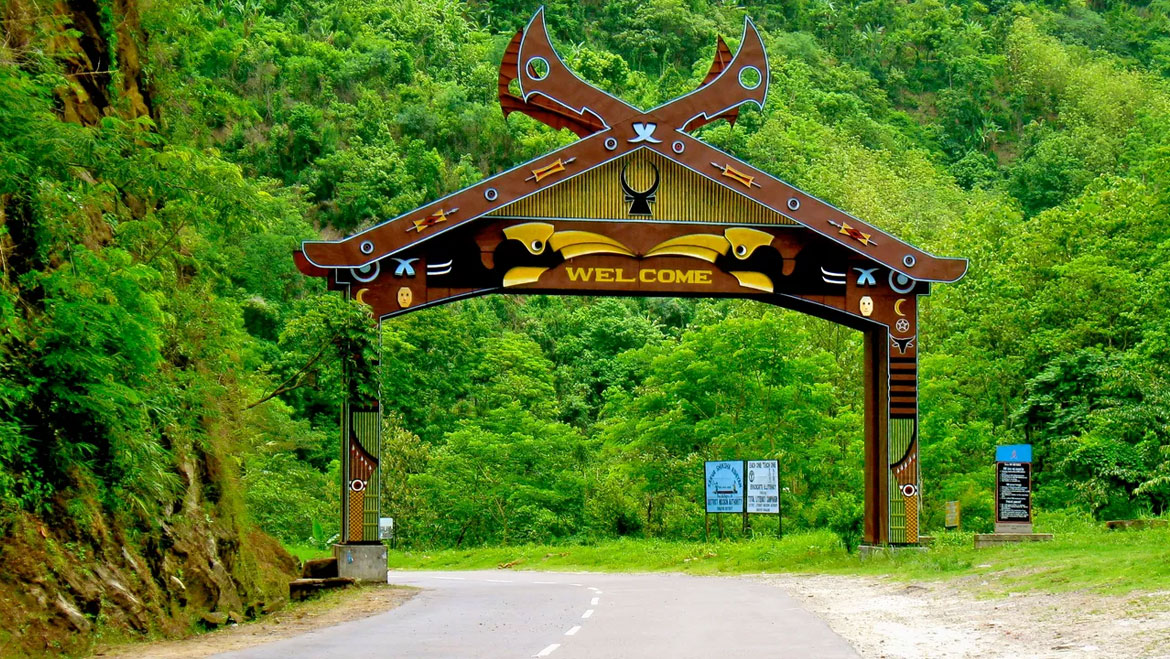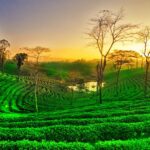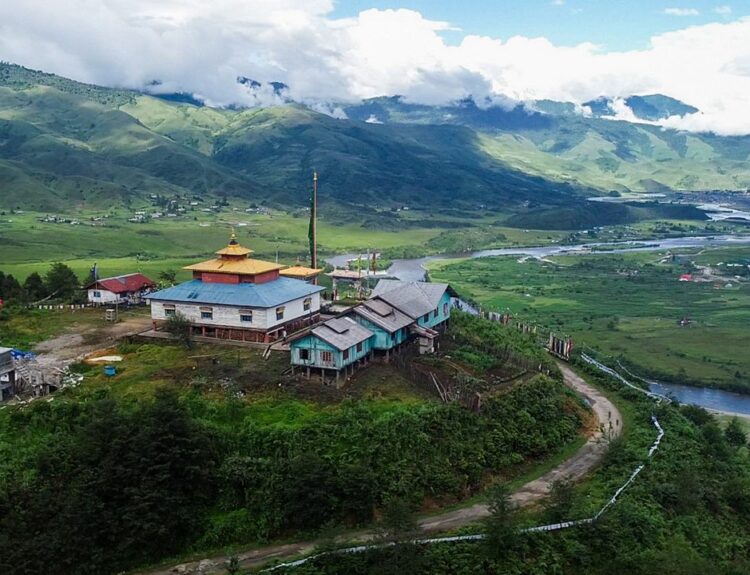Nestled in the northeastern corner of India, Nagaland is a state that boasts a unique blend of natural beauty, rich cultural heritage, and a tapestry of diverse tribal communities. Bordered by the states of Arunachal Pradesh, Assam, and Manipur, and sharing an international border with Myanmar, Nagaland is characterized by its hilly terrain and lush landscapes. The state was officially formed on December 1, 1963, and has since become a significant cultural hub in India, known for its vibrant traditions and customs.
The capital city, Kohima, serves as a focal point for both administrative activities and cultural exchanges, making it an essential destination for those looking to explore the heart of Naga culture. The population of Nagaland is predominantly composed of various indigenous tribes, each with its own distinct language, customs, and traditions. There are 16 officially recognized tribes in the state, including the Angami, Ao, Sumi, and Konyak, among others.
This diversity is not merely a demographic statistic; it is a living testament to the rich history and social fabric of the region. The Naga people have a deep-rooted connection to their land and heritage, which is reflected in their daily lives, rituals, and communal activities. As one delves deeper into Nagaland’s cultural landscape, it becomes evident that the state is not just a geographical entity but a vibrant mosaic of traditions that continue to thrive amidst modern influences.
Key Takeaways
- Nagaland is a state in northeastern India known for its rich cultural heritage and diverse tribes.
- The traditional festivals and celebrations in Nagaland showcase the vibrant and colorful culture of the state.
- Nagaland is famous for its indigenous arts and crafts, including handwoven textiles and intricate wood carvings.
- The unique cuisine of Nagaland features a variety of flavorful dishes, often incorporating locally grown ingredients.
- Exploring the natural beauty of Nagaland offers breathtaking views of lush green hills, cascading waterfalls, and serene lakes.
The Rich Cultural Heritage of Nagaland
Nagaland’s cultural heritage is a treasure trove of traditions that have been passed down through generations. The Naga tribes are known for their oral histories, which serve as a means of preserving their identity and values. These stories often revolve around themes of bravery, love, and the relationship between humans and nature.
The oral tradition is complemented by various forms of artistic expression, including music, dance, and storytelling, which play a crucial role in community gatherings and celebrations. Each tribe has its own unique folklore that reflects its history and worldview, contributing to the overall cultural richness of the state. The traditional attire of the Naga people is another significant aspect of their cultural heritage.
Each tribe has distinct clothing styles that are often adorned with intricate patterns and symbols representing their identity. For instance, the Ao tribe is known for its colorful shawls woven from cotton and silk, while the Konyak tribe showcases elaborate beadwork and headgear made from animal horns. These garments are not merely functional; they carry deep cultural significance and are often worn during festivals and important life events such as weddings and funerals.
The craftsmanship involved in creating these traditional outfits highlights the skills passed down through generations, showcasing the artistic talent inherent in Naga culture.
Traditional Festivals and Celebrations in Nagaland
Festivals in Nagaland are vibrant expressions of the state’s cultural identity and serve as a platform for showcasing the rich traditions of its various tribes. One of the most prominent festivals is the Hornbill Festival, celebrated annually in December. Often referred to as the “Festival of Festivals,” it brings together all Naga tribes to celebrate their unique cultures through music, dance, food, and traditional sports.
The festival takes place in Kisama Heritage Village near Kohima and attracts visitors from across India and beyond. During this time, one can witness traditional dances like the War Dance of the Konyaks or the Bamboo Dance of the Aos, each telling stories of valor and community spirit. Another significant festival is the Moatsu Festival celebrated by the Ao tribe in May.
This festival marks the end of the harvest season and is characterized by feasting, singing, and dancing. It serves as an occasion for community bonding as families come together to share food and participate in various traditional games. The Moatsu Festival also includes rituals to honor ancestors and seek blessings for future harvests.
Such celebrations not only reinforce social ties within communities but also provide an opportunity for younger generations to learn about their heritage through active participation.
Indigenous Arts and Crafts of Nagaland
| Art Form | Materials Used | Significance |
|---|---|---|
| Wood Carving | Wood, natural dyes | Used for making traditional Naga weapons, household items, and decorative pieces |
| Bamboo and Cane Craft | Bamboo, cane, and natural dyes | Utilized for making baskets, mats, furniture, and musical instruments |
| Textile Weaving | Cotton, silk, and natural dyes | Produces shawls, wraps, and traditional Naga attire with intricate designs |
| Pottery | Clay, natural dyes | Creates traditional Naga pottery for daily use and ceremonial purposes |
The indigenous arts and crafts of Nagaland are a reflection of the state’s rich cultural tapestry and serve as vital expressions of identity for its tribes. Handicrafts play an essential role in everyday life as well as in ceremonial contexts. Weaving is one of the most prominent crafts practiced by Naga women, who create intricate textiles using traditional looms.
The designs often incorporate symbols that hold specific meanings related to tribal identity or natural elements. For example, the motifs on Ao shawls may depict local flora or fauna, while Sumi shawls often feature geometric patterns that signify strength and resilience. In addition to textiles, Nagaland is renowned for its woodcrafts and bamboo products.
Artisans skillfully carve wooden items ranging from household utensils to ceremonial masks used in traditional dances. Bamboo is another versatile material extensively used in crafting furniture, baskets, and even musical instruments like the traditional Naga flute. The craftsmanship involved in these creations not only showcases artistic talent but also reflects sustainable practices rooted in local resources.
By utilizing materials readily available in their environment, Naga artisans maintain a harmonious relationship with nature while preserving their cultural heritage.
The Unique Cuisine of Nagaland
The cuisine of Nagaland is as diverse as its people, characterized by bold flavors and unique ingredients that reflect the region’s agricultural practices and cultural influences. Rice is a staple food across all tribes, often accompanied by a variety of meat dishes prepared using traditional methods such as smoking or drying. One notable dish is “Zutho,” a local rice beer that plays an integral role in social gatherings and celebrations.
It is often brewed at home using traditional techniques passed down through generations. Naga cuisine also features an array of vegetables and herbs that are indigenous to the region. Dishes like “Bamboo Shoot Curry” highlight the use of bamboo shoots as a key ingredient, providing a distinct flavor profile that is both tangy and earthy.
Additionally, Naga cuisine is known for its use of spices such as “king chili” (Bhut Jolokia), one of the hottest chilies in the world. This fiery ingredient adds depth to many dishes and reflects the Naga people’s affinity for bold flavors. Meals are typically communal affairs where families gather to share food, reinforcing social bonds while celebrating their culinary heritage.
Exploring the Natural Beauty of Nagaland
Wildlife Sanctuaries and Eco-Tourism
One such destination is the Intanki Wildlife Sanctuary, which spans over 200 square kilometers and provides habitat for various species including elephants, deer, and numerous bird species. The sanctuary’s rich biodiversity makes it an ideal spot for nature enthusiasts looking to explore Nagaland’s ecological treasures.
Picturesque Villages and Sustainable Practices
Another remarkable feature of Nagaland’s landscape is its picturesque villages perched on hilltops that offer panoramic views of the surrounding valleys. Villages like Khonoma are known for their sustainable agricultural practices and eco-friendly initiatives aimed at preserving both culture and environment.
Immersive Cultural Experiences
Visitors can engage with local communities to learn about traditional farming methods while enjoying breathtaking views of terraced fields that change colors with the seasons. The interplay between nature and culture in these villages creates an immersive experience that allows travelers to appreciate both the beauty of the land and the resilience of its people.
Interacting with the Diverse Tribes of Nagaland
Interacting with the diverse tribes of Nagaland offers a unique opportunity to gain insights into their way of life, traditions, and values. Each tribe has its own customs that govern social interactions, rituals, and community life. Engaging with local communities can be done through homestays or guided tours that provide authentic experiences while supporting local economies.
Visitors often find themselves welcomed into homes where they can share meals prepared with love or participate in traditional activities such as weaving or pottery-making. Cultural exchanges during festivals or community events further enhance this interaction. For instance, during the Hornbill Festival, visitors can witness tribal performances up close while engaging with performers who share stories behind their dances or songs.
Such interactions foster mutual respect and understanding between different cultures while allowing Naga people to showcase their rich heritage to a broader audience. This exchange not only enriches visitors’ experiences but also empowers local communities by promoting their culture on a global stage.
Preserving and Promoting the Culture of Nagaland
The preservation and promotion of Nagaland’s culture are vital for maintaining its unique identity amidst rapid modernization and globalization. Various organizations and government initiatives work tirelessly to document traditional practices, languages, and art forms at risk of fading away. Efforts include establishing cultural centers that serve as repositories for artifacts while providing platforms for artists to showcase their work.
Educational programs aimed at younger generations emphasize the importance of cultural heritage through workshops on traditional crafts or storytelling sessions that highlight oral histories. Moreover, tourism plays a crucial role in promoting Naga culture while providing economic opportunities for local communities. Responsible tourism initiatives encourage visitors to engage with local customs respectfully while supporting artisans through fair trade practices.
By fostering an appreciation for Naga culture among tourists, these initiatives help ensure that traditions continue to thrive even as new influences emerge. Ultimately, preserving Nagaland’s rich cultural heritage requires collective efforts from both locals and outsiders who recognize its value in contributing to India’s diverse cultural landscape.
Nagaland, a state in northeastern India known for its vibrant culture and stunning landscapes, is featured in an article on EasternBiz titled “Meet the 25 Things You’ll Absolutely Love.” This article highlights the unique attractions and experiences that make Nagaland a must-visit destination for travelers. From the colorful Hornbill Festival to the picturesque Dzukou Valley, Nagaland offers a wealth of unforgettable experiences for visitors. To learn more about what makes Nagaland so special, check out the article here.








